Photos with this report (click to enlarge) | |||
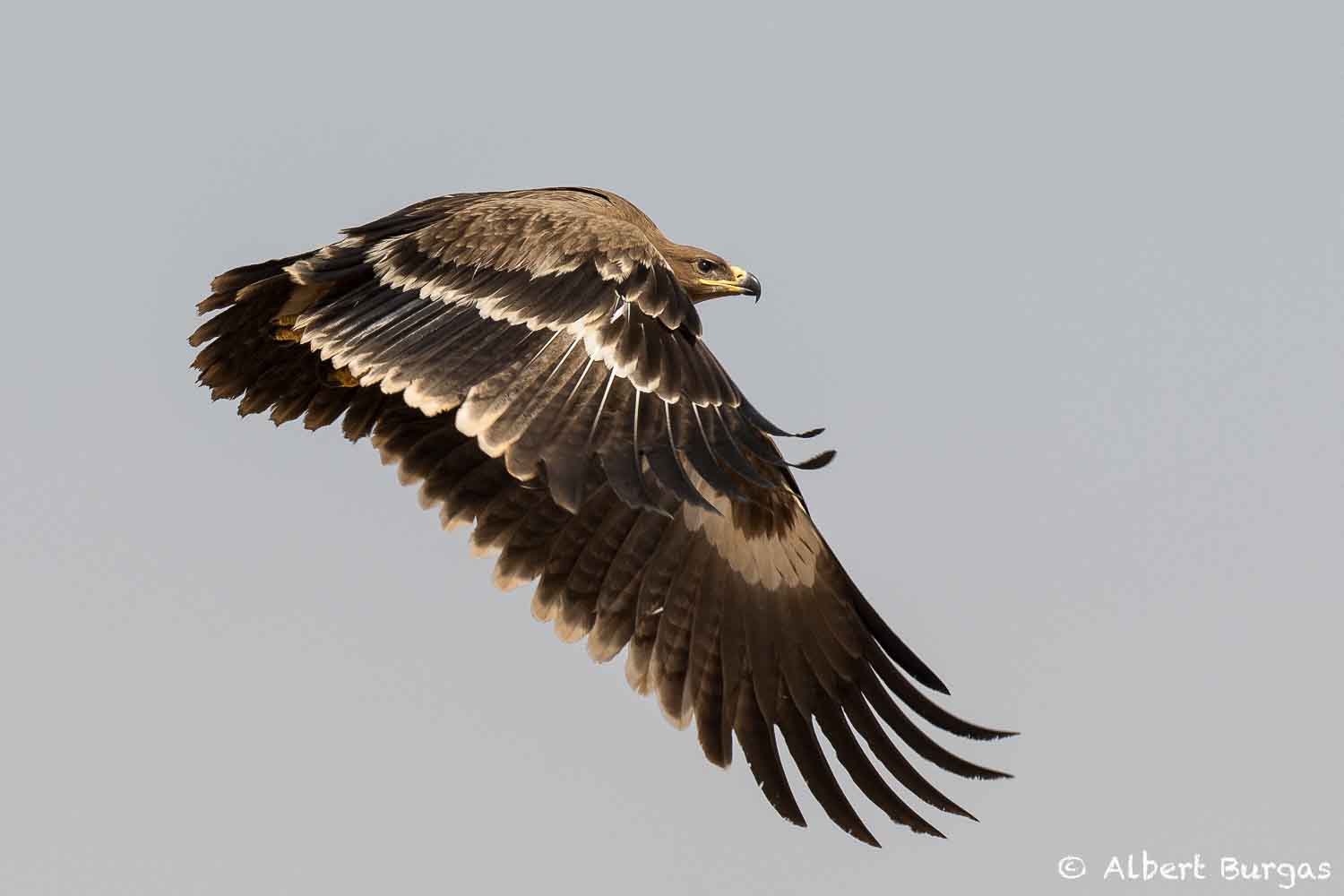 Steppe eagle |
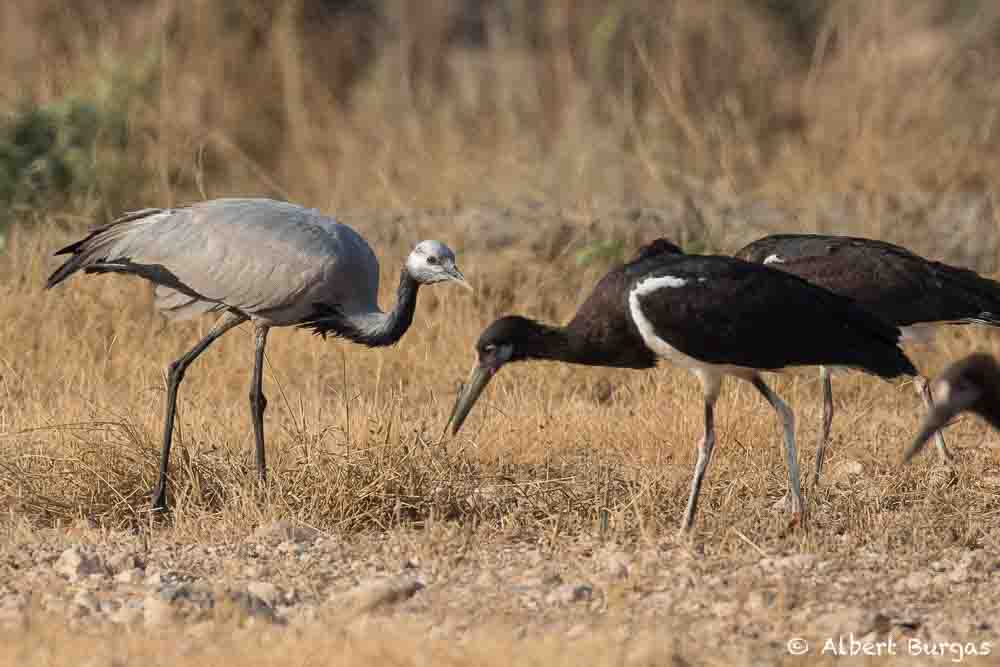 Demoiselle crane |
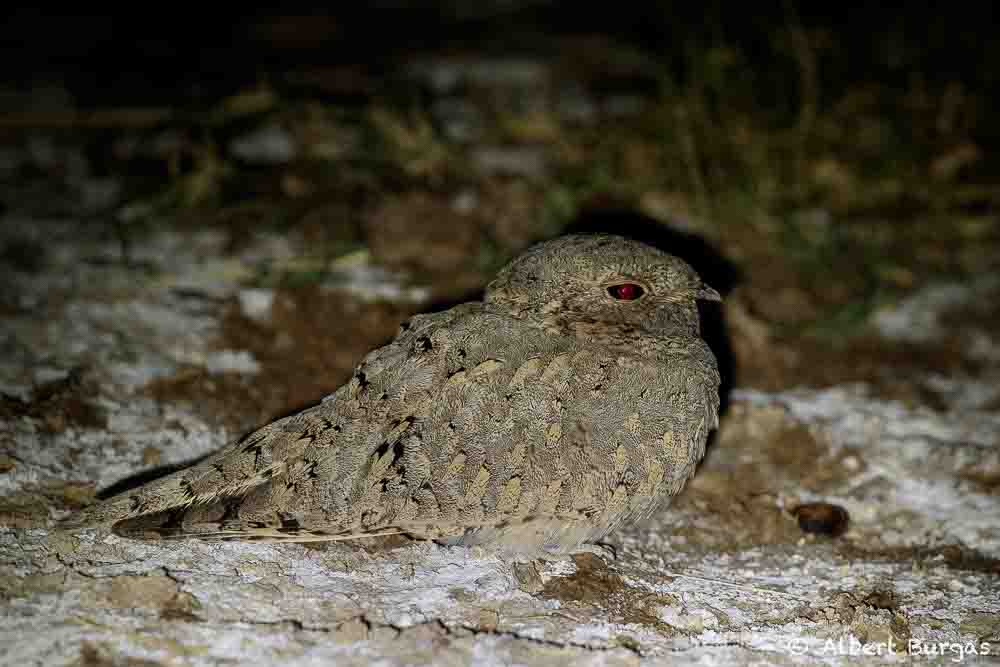 Sikes’s Nightjar |
|
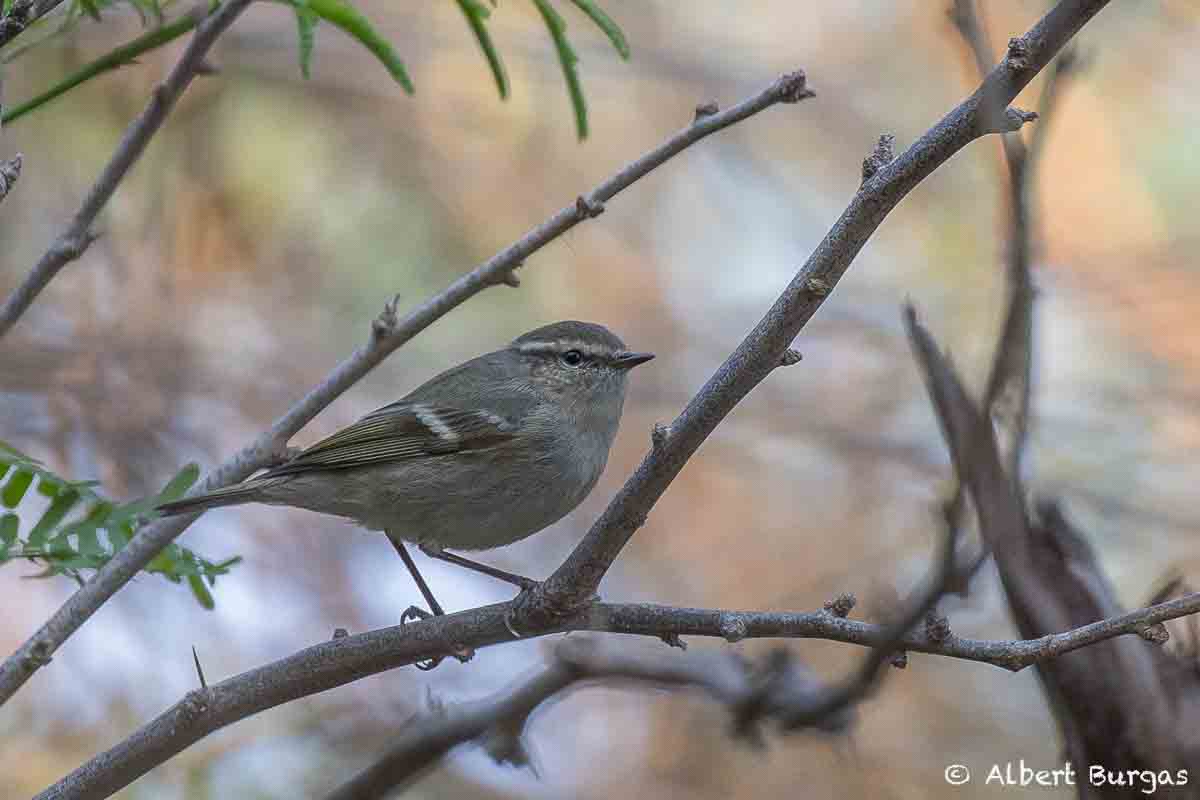 Hume’s Leaf Warbler |
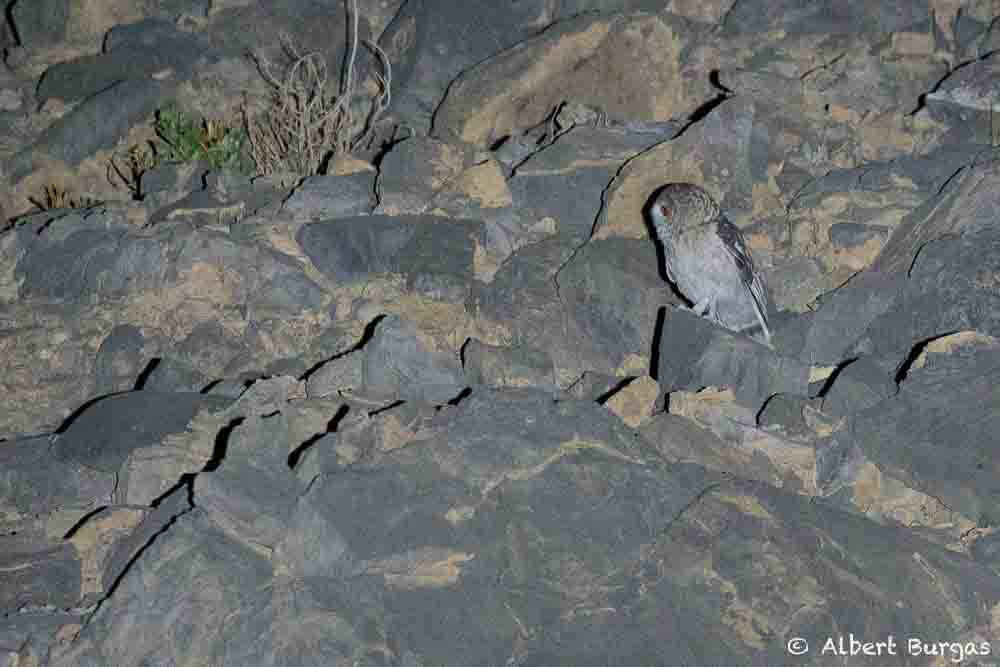 Omani Owl |
 Arabian Scops Owl |
|
The aim of this report is to show the surprisingly great diversity for a desert country such the Sultanate of Oman, where more than 200 species of birds may be easily seen in a few days. Most of the species are very interesting for European ornithologists willing to acquire experience in rare eastern species and subspecies of the Western Palearctic. For general information on the country, there are other reports that can be much more informativelike the ones below:
http://www.avesibericas.es/oman0.htm
http://www.club300.se/Files/TravelReports/Oman2008_MG.pdf
http://www.birdtours.com.uk/tripreports/oman/Oman-5/Oman-jan-08.htm https://www.cloudbirders.com/tripreport/repository/COOK_Oman_01_2014.pdf
http://www.stephenmenzie.com/oman2013/
Our aim is to provide a brief and systematic list of the observed species, including a commented list of those species that may be more interesting for the European ornithologists and with comments that we think that can be of some utility from the point of view of identification. For the best known spots we have adopted the same location coding used in the second edition of the book Birdwatching guide to Oman. In all other places not shown in this book we have written down the coordinates.
For any comment related to this report you can contact us to the following e-mail addresses: aollletorner@gmail.com / aburgas@gmail.com.
Finally, we have also included a list of the mammals seen.
We hope this report will be useful for future ornithological trips aiming to know this natural paradise.
Commented list of most remarkable bird species
GREYLAG GOOSE Anser anser.
We saw two individuals in Masirah (8.2 B) and other two in Khawr Dhurf (9.2). All birds we could see properly were of the rubrirostris subespecie.
JOUANIN’S PETREL Bulweria fallax.
Only one bird flying north in Ras Janjari (10.11), Mirbat.
BROWN BOOBY Sula leucogaster.
One bird in Raysut lighthouse 16°55'47.3"N 54°00’19.0"E and up to 4 in Fazaya beach 16°50'25.7"N 53°43’21.4”E.
SOCOTRA CORMORANT Phalacrocorax nigrogularis.
One bird near Ash Shuwaymiyyah 16°59'38.1"N 53°56’14.2”E, more than 50 in Raysut lighthouse 16°55'47.3"N 54°00’19.0”E, and a few individuals in Fazaya beach 16°50'25.7"N 53°43’21.4”E.
EURASIAN BITTERN Botaurus stellaris.
Quite a few feathers of a predated bird in Al Mughsayl (10.15), maybe by some of the juvenile Bonelli’s Eagle Aquila fasciata presents in the area.
YELLOW BITTERN Ixobrychus sinensis.
At least two individuals in Khawr Al Mughsayl (10.15).
INDIAN POND HERON Ardeola grayii AND SQUACCO HERON Ardeola ralloides.
More than 20 Ardeola along the trip. We paid attention to few individuals, being approximately half of them pertaining to each specie. Indian has the mantle much darker, bolder streaks on neck and especially a dark stripe between the eye and the bill, not present in Squacco.
INTERMEDIATE EGRET Egretta intermedia.
Three individuals, two in Khawr Rawri (10.7) and another in Al Mughsayl (10.15).
ABDIM’S STORK Ciconia abdimii.
More than 300 birds in Raysut Sewage Plant 16°59'38.1"N 53°56’14.2”E.
CRESTED HONEY BUZZARD Pernis ptilorhynchus.
Two juveniles in Masirah (8.2 B) and another juvenile in Salalah, Jarziz Farm (10.1 A). One in Masirah and the bird in Salalah had a strong influence of European Honey Buzzard Pernis apivorus.
YELLOW-BILLED KITE Milvus aegyptius.
One juvenile of the aegyptius ‘arabicus’ subespecie in Taqah (10.6).
LAPPET-FACED VULTURE Torgos tracheliotus.
Two juveniles in the Dhofar, three juveniles and immature individuals at the camel place in Mudday 17°29'20.1"N 53°21’32.1”E, and four more birds in Wadi Bani Habib (4.3 L), Al Hajar mountains. All birds were of the negevensis subespecie.
LONG-LEGGED BUZZARD Buteo rufinus.
One adult in Masirah, showing characters of rufinus subespecie. Also another individual in Dhofar mountains 17°06'09.3"N 54°41’53.1”E.
GREATER SPOTTED EAGLE Aquila clanga.
At least 13 birds going to roost in Al Ansab Lagoons (1.1), Masqat. 15 birds in Raysut Sewage Plant 16°59'38.1"N 53°56’14.2”E, one of them ‘fulvescens’. In Salalah we saw other 10 birds. Most of the individuals were juveniles but all ages were seen.
VERREAUX’S EAGLE Aquila verreauxii.
One adult seen quite close and several times in Dhofar mountains 17°06'09.3"N 54°41’53.1”E.
STEPPE EAGLE Aquila nipalensis.
More than 400 birds in Raysut dump 16°59'00.1"N 53°57’03.5”E. Some solitary bird in Dhofar mountains.
EASTERN IMPERIAL EAGLE Aquila heliaca.
More than 20 individuals of all ages. Most of them in Salalah farms area, Dhofar and in Raysut dump, but also a few individuals all over south Oman, both coastal and interior.
LESSER KESTREL Falco naumanni.
One adult male moulting p10, s1 and rr1, showing intermediate characters between pekinensis and naumanni in Ubar 18°14'47.1"N 53°39’03.5”E.
AMUR FALCON Falco amurensis.
A 2cy male in Lakabi 18°13'10.2"N 56°32’37.7”E, and a female in Jarziz Farm, Salalah 17°02'53.3"N 54°08’05.7”E.
BARBARY FALCON Falco pelegrinoides.
One adult male in Wadi Darbat (10.8).
BAILLON’S CRAKE Porzana pusilla.
One bird in Khawr Al Mughsayl (10.15).
DEMOISELLE CRANE Grus virgo.
One 1rst winter individual in the Raysut Sewage Plant 16°59'38.1"N 53°56’14.2”E, with the Abdim’s Storks.
SPOTTED THICK-KNEE Burhinus capensis.
A few individuals heard in Masirah. During the first trip also two birds seen in Wadi Al Mughsayl (10.15).
WHITE-TAILED LAPWING Vanellus leucurus.
One bird with Red-wattled Lapwing in Raysut Sewage Plant 16°59'38.1"N 53°56’14.2”E.
GREAT KNOT Calidris tenuirostris.
One bird in Filim (8.1 C), two in Khawr Durf (9.2) and one in Khawr Ghawi (9.3 F).
BROAD-BILLED SANDPIPER Calidris falcinellus.
Several birds in Shannah 20°44'41.2"N 58°43’21.0"E and also in Filim (8.1 C).
LONG-TOED STINT Calidris subminuta.
One bird, previously reported, in East Khawr (10.2).
PIN-TAILED SNIPE Gallinago stenura.
Only one bird in Khawr Al Mughsayl (10.15). During the first trip two birds in Haima 19°57'39.4"N 56°17’00.7”E.
CRAB PLOVER Dromas ardeola.
High numbers in Shannah 20°44'41.2"N 58°43’21.0"E and in Filim (8.1 C).
SMALL PRATINCOLE Glareola lactea.
One bird at evening in Khawr Taqah (10.6).
BROWN NODDY Anous stolidus.
Two birds on a buoy in Fazaya beach 16°50'25.7"N 53°43’21.4”E.
SAUNDERS’S TERN Sternula saundersi.
At least one bird from the ferry to Masirah 20°39'33.6"N 58°51'08.1"E. We could see five outer primaries totally dark from their base. Also many Little Tern in Masirah and other places along the coast.
WHITE-CHEEKED TERN Sterna repressa.
At least one bird fishing with other terns at the beach of Al Mughsayl (10.15). It was possible to see well the upperparts uniformly grey, including the rump, very different of the abundant Common Terns.
PALLAS’S GULL Larus ichtyaetus.
Several individuals in Ras Abu Rasas, Masirah (8.4 C) and in Khawr Durf (9.2).
MEW GULL Larus canus.
One 1rst winter in Shannah 20°44'50.1"N 58°43’52.8”E.
CASPIAN GULL Larus cachinnans cachinnans.
Only two birds of 1st winter in Sannah 44'50.1"N 58°43’52.8”E. It was much more common on the beaches of the Arabian Sea, North Oman, seen during the first trip in 2015.
CROWNED SANDGROUSE Pterocles coronatus.
One bird on the road from Al Mazyunah to Ubar.
ORIENTAL TURTLE DOVE Streptopelia orientalis.
One bird heard at dusk, already with no light at the oasis near Qatbit (7.4 D).
ASIAN KOEL Eudynamys scolopaceus.
One female in Balid Farm (7.5) 18°21'20.7"N 54°00’41.4”E. In January 2015 a male was seen at the same place.
ARABIAN SPOTTED EAGLE Owl Bubo (africanus) milesi.
Up to 5 individuals seen during two hours of night driving on the Dhofar roads.
LITTLE OWL Athene noctua.
Some individuals heard and one seen in the Dhofar with phenotype typical of lilith. It’s said that both saharae and lilith are in contact in places of Oman, with some individuals more close to one or the other subespecie.
DESERT TAWNY OWL Strix hadorami.
One male in Wadi As Shuwaymiyyah 17°55'08.9"N 55°0028’51.8”E, two males more in Wadi Al Mughasyl (10.15) and a female heard near Hasik 17°13'55.0"N 55°15’17.1”E.
OMANI OWL Strix butleri.
One male heard and seen in Al Hajar mountains.
SYKES’S NIGHTJAR Caprimulgus mahrattensis.
One bird found in the Muntasar oasis (7.3 D). It is the 1st record in Oman according to the Oman Bird List edition 7.6.
EGYPTIAN NIGHTJAR Caprimulgus aegyptius.
One bird seen flying and siting at dusk in the oasis near Qatbit (7.4 D).
PIED KINGFISHER Ceryle rudis.
One bird, previously recorded, in Khawr Rawri (10.7).
DUNN’S LARK Eremalauda dunni.
One male singing near the road between Mudday and Al Mazyunah.
BAR-TAILED LARK Ammomanes cinctura.
One bird at the road between Al Mazyunah and Ubar.
SINGING BUSH LARK Mirafra cantillans.
Very abundant in Jarziz Farm (10.1 A), Salalah.
LONG-BILLED PIPIT Anthus similis.
Some birds of arabicus subespecie in the Dhofar mountains.
OLIVE-BACKED PIPIT Anthus hodgsoni.
One bird in Filim (8.1 C).
EUROPEAN ROBIN Erithacus rubecula.
One individual in Wadi Muaydin 22°59'21.4"N 57°40’15.2”E which is one of the very few records in Oman, maybe the 8th record for all the country.
EASTERN NIGHTINGALE Luscinia megarynchos.
One bird singing from a dense thicket in Raysut Sewage Plant, showing characters of the eastern ssp. hafizi (=golzii)..
BLACK-THROATED THRUSH Turdus atrogularis.
Strong irruption in winter 2016-2017, otherwise rare but regular. We saw birds in several places. Three birds in Masirah (8.2 B), one in Balid Farm (7.5), one in Wadi Al Muaydin (4.3 E) and another in Wadi Bani Habib (4.3 L). Even so, the most remarkable sighting for this specie was a minimum of 40 individuals that came constantly to drink in a small pool in an area with abundant Juniper trees in Sayq Plateau (4.3 N).
SONG THRUSH Turdus philomelos.
Very few birds and much less abundant than Black-throated.
SCRUB WARBLER Scotocerca inquieta.
Two birds of subespecie grisea in Sayq Plateau (4.3 N).
We didn’t expected to see this specie as we thought it was a strictly migrant specie. We found a few birds with characters of elaeica: one in Wadi Darbat (10.8), another in Masirah sewage plant (8.2 B) and two in Ayn Hamran (10.4).
MÉNÉTRIÉS WARBLER Sylvia mystacea.
One bird in Shisr (7.6) and another in Wadi Darbat (10.8).
ARABIAN WARBLER Sylvia leucomelaena.
Few birds together in Ayn Hamran (10.4) belonging to the nominal subespecie. They presented some weak marks on the under-tail coverts. The GIS, behaviour and the short primary projection is very useful to distinguish from Eastern Orphean Warblers.
LESSER WHITETHROAT Sylvia curruca.
The Lesser Whitethroat complex is a tricky subject, especially concerning the variation at the east side of their range. In recent years there has been some research that is sheding some light in the darkness. In 2013, Olsson et al. (http://www.sciencedirect.com/science/article/pii/S1055790313000055) presented the distribution of the different subspecies, indicating that minula does not winter in the Arabian Peninsula and his breeding range is restricted to China. Thus, the Desert Lesser Whitethroat wintering in Oman have to be halimodendri, which has a very characteristic call according the recordings found in Xeno-canto (http://www.xeno-canto.org/species/Sylvia-curruca?query=ssp:%22halimodendri%22). To make the issue more complex, very recently Votier et al. (2016) found some birds phenotypically fitting halimodendri that genetically and isotopically fitted with blythi (http://link.springer.com/article/10.1007/s10336-016-1351-5). Although in this research they studied some birds from Oman that were perfect halimodendri in all senses, they also had some blythi from UAE. Hence, although halimodendri are supposed to be the most common in winter, both subspecies arrive to the region. This is not unexpected as blythi has a wide distribution in Siberia, north of halimodendri’s distribution. We don’t know any reference the best way to identify blythi/halimodendri using their call. We have only compared with the recordings found in Xeno-canto and there most of the sounds attributed to blythi are from the area that Votier et al. arbitrarily attributed to the supposedly intergradation zone within both taxons. This said, most calls we heard all around Oman coincided with halimodendrifrom Xeno-canto, only one bird in Qatbit (7.4) had identical call to the following recording attributed to blythi from Aqmola province, in central Kazakhstan (http://www.xeno-canto.org/155770).
We are not sure if we have found any nominal curruca, but at least we heard a couple of birds calling like this subespecie, however we didn’t went after them. Finally, we found two birds with the appearance of althaea above 2.000 meters in the Al Hajar Mountains, one during this trip and the other in 2015. In any of this cases we didn’t hear any voice.
HUME’S LEAF WARBLER Phylloscopus humei.
One bird in Ayn Hamran (10.4) and another in Qatbit (7.4).
PLAIN LEAF WARBLER Phylloscopus neglectus.
A few individuals in Wadi Al Muaydin (4.3 E).
CHIFFCHAFF Phylloscopus collybita.
Undoubtedly, this is another taxonomically interesting species in Oman. It is one of the commonest passerines in winter. All birds we heard called like tristis. We never heard any collybita call. However, often the coloration was not fitting to what is described for classical tristis (Dean & Svensson 2005). After detailed observation and pictures, one can see yellow speckles were tristis are not supposed to have it. In Masirah we found several singing birds from which many had a mixt song between collybita and tristis, and even some bird calling like tristis was singing like perfect collybita. This points to an intergrade between collybita abietinus and tristis, which is also called the ‘fulvescens’ form (Marova et al. 2013; Copete com. pers.).
RED-BREASTED FLYCATCHER Ficedula parva.
Some solitary birds in Filim (8.1 C), Wadi Darbat (10.8), Raysut Sewage Plant 16°59'38.1"N 53°56’14.2”E and Ayn Hamran (10.4).
NILE VALLEY SUNBIRD Hedydipna metallica.
Relatively abundant in Mudday 17°28'46.3"N 53°21’07.4”E.
TURKESTAN RED-TAILED SHRIKE Lanius (isabellinus) phoenicuroides.
One male in Ayn Hamran (10.4).
STEPPE GREY SHRIKE Lanius (meridionalis) pallidirostris.
One bird in Masirah and five in Shisr (7.6).
YEMEN SERIN Crithagra menachensis.
A few birds in Tawi Atayr (10.9).
List of mammals of the trip in 2016
Arabian red fox. Dhofar (≥7); Muntasar (1); Qatbit (1); Al Hajar (≥1); Mudday (≥1). Seen and listened
Arabian wolf. Dhofar (8). Seen and listened
Honey badger. Dhofar (Ayn Hamran). Signs and tracks
Arabian wildcat. Dhofar (≥1). Seen
Mountain gazelle. Muntasar (2). Seen
Indian Crested Porcupine. Dhofar (2). Seen and signs
Indo-Pacific humpback dolphin. Fararah (≥10) ; Fazaya Beach (≥5). Seen
Greater White-fronted Goose
Greylag Goose
Ruddy Shelduck
Common Shelduck
Eurasian Wigeon
Gadwall
Eurasian Teal
Mallard
Northern Pintail
Garganey
Northern Shoveler
Red-crested Pochard
Common Pochard
Ferruginous Duck
Tufted Duck
Arabian Partridge
Sand Partridge
Grey Francolin
Little Grebe
Black-necked Grebe
Jouanin's Petrel
Persian Shearwater
Masked Booby
Brown Booby
Great Cormorant
Socotra Cormorant
Eurasian Bittern
Yellow Bittern
Black-crowned Night Heron
Striated Heron
Squacco Heron
Indian Pond Heron
Cattle Egret
Western Reef Heron
Little Egret
Intermediate Egret
Great Egret
Grey Heron
Abdim's Stork
Western White Stork
Glossy Ibis
Eurasian Spoonbill
Greater Flamingo
Crested Honey Buzzard
Yellow-billed Kite
Egyptian Vulture
Lappet-faced Vulture
Short-toed Snake Eagle
Western Marsh Harrier
Pallid Harrier
Montagu's Harrier
Eurasian Sparrowhawk
Long-legged Buzzard
Greater Spotted Eagle
Booted Eagle
Verreaux's Eagle
Bonelli's Eagle
Steppe Eagle
Eastern Imperial Eagle
Osprey
Lesser Kestrel
Common Kestrel
Amur Falcon
Barbary Falcon
Baillon's Crake
Common Moorhen
Eurasian Coot
Demoiselle Crane
Spotted Thick-knee
Black-winged Stilt
Eurasian Oystercatcher
Pacific Golden Plover
Grey Plover
Pheasant-tailed Jacana
Red-wattled Lapwing
White-tailed Lapwing
Little Ringed Plover
Common Ringed Plover
Kentish Plover
Lesser Sand Plover
Greater Sand Plover
Whimbrel
Eurasian Curlew
Black-tailed Godwit
Bar-tailed Godwit
Ruddy Turnstone
Great Knot
Ruff
Broad-billed Sandpiper
Curlew Sandpiper
Long-toed Stint
Temminck's Stint
Sanderling
Dunlin
Little Stint
Red-necked Phalarope
Terek Sandpiper
Common Sandpiper
Green Sandpiper
Spotted Redshank
Common Greenshank
Marsh Sandpiper
Wood Sandpiper
Common Redshank
Common Snipe
Pin-tailed Snipe
Crab-plover
Small Pratincole
Brown Noddy
Little Tern
Saunders's Tern
Gull-billed Tern
Caspian Tern
Whiskered Tern
White-winged Tern
Sandwich Tern
Great Crested Tern
Lesser Crested Tern
Common Tern
White-cheeked Tern
Slender-billed Gull
Common Black-headed Gull
Pallas's Gull
Sooty Gull
Mew Gull
Heuglin’s Gull
Sttepe Gull
Caspian Gull
Lichtenstein's Sandgrouse
Crowned Sandgrouse
Chestnut-bellied Sandgrouse
Rock Dove
African Collared Dove
Eurasian Collared Dove
Oriental Turtle dove
Laughing Dove
Namaqua Dove
Bruce's Green Pigeon
Rose-ringed Parakeet
Asian Koel
Arabian Scops Owl
Arabian Spotted Eagle-owl
Little Owl
Omani Owl
Desert Tawny Owl
Short-eared Owl
Sykes’s Nightjar
Egyptian Nightjar
Common Kingfisher
Pied Kingfisher
Green Bee-eater
Indian Roller
Eurasian Hoopoe
Singing Bush Lark
Black-crowned Sparrow-Lark
Dunn's Lark
Bar-tailed Lark
Desert Lark
Greater Hoopoe-Lark
Greater Short-toed Lark
Crested Lark
Sand Martin
Pale Crag Martin
Barn Swallow
Richard's Pipit
Tawny Pipit
Long-billed Pipit
Olive-backed Pipit
Tree Pipit
Red-throated Pipit
Yellow Wagtail
Citrine Wagtail
Grey Wagtail
White Wagtail
White-eared Bulbul
White-spectacled Bulbul
Grey Hypocolius
European Robin
Eastern Nightingale
Bluethroat
Eversmann's Redstart
Black Redstart
Blackstart
Isabelline Wheatear
Desert Wheatear
Red-tailed Wheatear
Arabian Wheatear
Hume's Wheatear
Blue Rock Thrush
Black-throated Thrush
Song Thrush
Graceful Prinia
Scrub Warbler
Eastern Olivaceous Warbler
Clamorous Reed Warbler
Ménétriés's Warbler
Asian Desert Warbler
Arabian Warbler
Desert Lesser Whitethroat
Siberian Whitethroat
Eurasian Blackcap
Absyssinian White-eye
Hume's Leaf Warbler
Plain Leaf Warbler
Common Chiffchaff
Red-breasted Flycatcher
Nile Valley Sunbird
Palestine Sunbird
Shining Sunbird
Purple Sunbird
Black-crowned Tchagra
Isabelline Shrike
Turkestan Red-tailed Shrike
Southern Grey Shrike
Sttepe Grey Shrike
African Paradise Flycatcher
House Crow
Brown-necked Raven
Fan-tailed Raven
Tristram's Starling
Common Starling
Common Myna
House Sparrow
Rüppell's Weaver
Indian Silverbill
African Silverbill
Yemen Serin
Striolated Bunting
Cinnamon-breasted Bunting